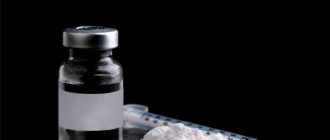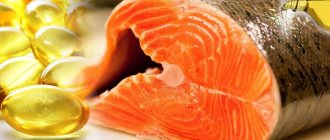As a narcologist, I am increasingly asked what laughing gas (club gas) is and why it is dangerous? Until recently, such smoking mixtures, fashionable among young people, are gradually becoming a thing of the past. “Advanced” youth have a new fetish – “laughing gas”. Nitrous oxide is used quite widely; there is no official ban on its sale and use. Greedy drug dealers did not fail to take advantage of this. They don’t care that young lives are being lost from this momentary “joy”, the main thing is money, money.
At most parties and nightclubs, you can now often see young men and women with balloons in their hands. Don’t think that these are cute jokers who decided to amuse others with their changed voice after inhaling helium. No, the balloons do not contain harmless helium, but we are talking about a completely different kind of entertainment. The balloons are filled with a portion of “laughing gas” - this is how a new fashionable drug is now delivered. The country is going crazy. “On-air parties” fill Russia.
It is extremely difficult to combat any drug addiction in youth companies, because they tend to do what other, more “advanced” members do. This herd mentality leads to very sad consequences, because even those members of the company who, in principle, are not inclined to such risky experiments, become addicted to drugs. But in a group you need to be “like everyone else,” otherwise you will find yourself an outcast, so any negative examples spread extremely quickly and become “fashionable and stylish.”
The only radical method of reducing the consumption of laughing gas would be a law restricting the free sale of nitrous oxide and introducing strict accountability for this substance.
hangover cure
In the basement of the Pneumatic Institute, the young chemist Humphry Davy observed the Watt-Beddows machine and at the same time tried on himself the different gas mixtures that the machine produced (we talked about another valuable observation made by Davy in the material “Chrysopoeia of Water”). In 1800, in his book Researches, Chemical and Philosophical, Davy described the extraordinary effect of one of the gases - nitrous oxide, which he was able to isolate in its pure form: it helped him cope with a hangover. “After the third inhalation, I did not feel a headache, a pleasant excitement arose, my willpower was weakened, bright ideas quickly flashed through my mind; I walked around the room and was very excited for several minutes.”
The idea to relieve a hangover with nitrous oxide came to the chemist for a reason - he had already breathed this gas before. At the same time, he wrote, “increased muscle activity was accompanied by very pleasant sensations. <…> I laughed, staggered and tried to speak, but I couldn’t utter a word.”
Davy called nitrous oxide “laughing gas” - and this name, and at the same time the substance itself, quickly became popular among the people. Beddoes was still figuring out whether nitrous oxide helped against tuberculosis - and British nobles had already begun to hold social events where bags of laughing gas were served instead of wine and delicacies. According to contemporaries, at these parties some “ran up and down the stairs and throughout the house, saying strange things,” others “lost the feeling of their own weight,” and still others “felt like the sound of a harp.” There were also those who described the sensation as “returning from a walk in the snow to a warm room.”
In general, the entertainment that British aristocrats became addicted to in 1799 would be called either recreational drug use or substance abuse by modern people, depending on the context.
Life Made Easier: A Cure for Quarrelsome Wives is an 1830 satirical engraving of Humphry Davy administering a dose of laughing gas to a woman.
CC0
Share
No one at that time could explain exactly how nitrous oxide “has fun.” Moreover, even now this is not completely clear. Experiments on rats showed that it blocks NMDA receptors, which causes dopamine to be released in the areas of the brain responsible for pleasure. From a neurophysiological point of view, these processes should indeed be responsible for feelings of joy and positive emotions. But no one has yet experimentally confirmed this in humans. Davy and his followers did not know that the fun caused by the gas did not pass without a trace for them. Any substance that produces a feeling of pleasure can be addictive—nitrous oxide is no exception. The release of dopamine, which brings laughter and good mood, is associated with the formation of psychological addiction if it is released in certain areas of the brain. The fact that those addicted to laughing gas do not face full-blown chemical dependence has not been proven by anyone for three centuries. Although no one has provided clinical examples of chemical addiction to N2O. There are some considerations that the gas does not act strongly enough on dopaminergic pathways and neurons do not lose sensitivity from its influence: this, in theory, should abolish the withdrawal syndrome. But all this does not prevent nitrous oxide, so cheap, accessible and easy to use, from ruining addicted consumers.
Disadvantages of this type of inhalation
Even this gentle inhalation method has its drawbacks. These include the following:
- It is impossible to put the patient into a state of deep anesthesia. This method does not allow for major surgery.
- If a large dose is administered, the level of oxygen saturation in the blood will decrease. This can cause hypoxia.
- The contractile activity of the myocardium will decrease slightly, but will decrease.
- If during the operation the patient feels severe pain, he may twitch sharply, thereby complicating the doctor’s work.
- Large doses may contribute to depression of brain activity.
A breath of insensibility
Sir Davy, however, can hardly be called the Shulgin of the Victorian era - he, like his employer, did not intend to invent the drug. The chemist tried to use his mixtures of gases for a variety of purposes - and, among other things, discovered nitrous oxide had an analgesic effect. Davy suggested using laughing gas during surgical operations, but doctors did not listen to him and continued to operate without anesthesia. Therefore, in the middle of the 19th century, this idea had to be reinvented.
On December 10, 1844, the American dentist Horace Wells showed the public a man who, under the influence of nitrous oxide, jumped up for joy and did not react in any way to the fact that he was hitting his feet on the bench, and then could not remember his actions - he was only surprised at the bruises and abrasions on his legs. The very next day, Wells asked his colleague to remove his tooth. Before the procedure, he inhaled nitrous oxide and felt no pain at all. After this, Wells used laughing gas on at least 12 of his patients.
Physiologists have not yet agreed on why nitrous oxide not only makes you happy, but also relieves pain. Perhaps it is the euphoria itself, which dulls the feeling of pain. Or that nitrous oxide can block glycine receptors on neurons in the brain, which shuts down the glutamatergic system, which is also responsible for pain. Or in endogenous opioids - this suspicion arose after an experiment on rodents.
In it, mice and rats were first “hooked” on morphine - injected until it stopped working (tolerance developed) - the animals continued to feel pain after the injection. The administration of nitrous oxide to the test morphine addicts also did not help reduce sensitivity: which means, the scientists concluded, both drugs act in the same way, that is, through the opiate system.
In search of fame and recognition, Wells went to show his invention in Boston. But he was unlucky there: during the demonstration, the patient screamed in pain. Later, however, the patient admitted that although he screamed in pain during the process, afterward he did not remember not only the pain, but even the moment at which his tooth was removed. It was too late to make excuses: the students in the surgical theater had already begun to joke that they had simply been “duped,” and the doctors doubted the effectiveness and safety of this innovation. A year later, William Morton would be named the founder of anesthesia, who contributed to the demonstrations of his friend Wells in Boston, and at that time he himself came up with the idea of using the completely “unfunny” diethyl ether as an anesthesia.
First public demonstration of the effects of medicinal ether by William Morton on October 16, 1846
Massachusetts General Hospital
Share
It was not until 15 years after Wells' death, in 1863, that dentist Gardner Colton (who had helped him with demonstrations before Morton) began using nitrous oxide in the clinics he founded in New Haven and New York. Over the next three years, more than 25 thousand patients received laughing gas anesthesia. But, as it turned out, the anesthetic effect of nitrous oxide was not enough for anything more than tooth extraction. Diethyl ether was more successful here too.
True, towards the end of the 19th century it became clear that laughing gas could have some medical benefits. Doctors have noticed that nitrous oxide is good for induction of anesthesia - a stage of anesthesia that allows you to quickly turn off consciousness and “skip” the stage of arousal - so falling asleep becomes more pleasant for the patient. This also allowed less ether to be used - which is safer for the patient.
A gas-ether inhaler helped to combine two types of anesthesia - an invention of 1876, which supplied the patient with a mixture of nitrous oxide and ether, and the doctor could change their concentrations at his discretion. Thus, it became common practice in hospitals to begin all anesthetic procedures with a moderate stream of nitrous oxide, and then gradually increase the anesthesia with stronger ether or chloroform. Modern anesthesia machines are also built on this principle of mixing gases, although laughing gas is used extremely rarely in them.
Joseph Clover prepares chloroform anesthesia. Behind his right shoulder is a bag of air containing 4.5 percent chloroform vapor
CC0
Share
Contraindications to the procedure
A child should not be sedated with nitrous oxide if he or she has the following conditions:
- Colds, allergic rhinitis, sinusitis and any other infectious diseases that interfere with the normal functioning of nasal breathing.
- If the baby has suffered a traumatic brain injury in the last three months.
- For chronic otitis media.
- If convulsions or epileptic attacks are possible.
- In case the child is too afraid.
Contraindications include age under 3 years. A small child will not be able to express his feelings and emotions normally. And during sedation, it is simply necessary to find out about his well-being in order to prevent a possible deterioration of his condition. In all of the above situations, nitrous oxide inhalations are not given to children.
Forbidden Air
Poe's cousin, George, also took part in the popularization of laughing gas when he came up with a way to liquefy it. Before that, nitrous oxide had to be carried in huge bags, it was expensive and inconvenient, especially compared to injectable analgesics - for example, morphine, which was already gaining popularity in the second half of the 19th century. Liquefied nitrous oxide took up much less space; bags were replaced by metal cylinders, which settled in dental offices for a long time. And from there they went to parties.
Nitrous oxide existed in this capacity throughout the 20th century. And if the circulation of medical nitrous oxide could still be somehow controlled, then the smaller cylinders that were used to whip cream in restaurants slipped away from this control. Therefore, it was not difficult to obtain laughing gas. In addition, it was inexpensive - for example, at an American rock festival in the 1970s, gas cost 25 cents per balloon.
The philosopher Bertrand Russell in the 15th chapter of “The History of Western Philosophy” recalls, with reference to William James (the same one with whom we began our story), the following anecdote about a certain lover of laughing gas: “Whenever he was under the influence of this gas, he knew the secret of the Universe, but when he came to his senses, he forgot it. Finally, by great effort, he succeeded in writing down this secret before the vision disappeared. Fully awake, he rushed to look at what he had written down. It was: “The smell of oil is everywhere.”
Apparently, Russell made a mistake with the source and slightly changed the quote - there is reason to believe that this is a reference to the experiments of the physician Oliver Holmes not with laughing gas, but with ether, which had nothing to do with the secret of the Universe, and for Holmes everything smelled not of oil, but turpentine. Nevertheless, it was Russell’s version that became widely known; Letov sang “eternity smells like oil,” and laughing gas, under the influence of which James studied Hegel, in addition to euphoria, can actually cause hallucinations.
Despite the ambiguity of its effects, laughing gas not only did not lose its audience - but, on the contrary, even increased it as competitors were criminalized. By the late 2000s, about 15 percent of teenagers in the United States had tried nitrous oxide at least once in their lives. And in its homeland, Great Britain, it became the eighth most popular drug by 2021. At least one in three people in the kingdom were personally acquainted with it - while less than a percentage of British adults took opioids. It is unknown how many consumers of laughing gas there are in Russia, although, judging by individual medical studies, they exist, and there are many of them.
There are more and more studies of the consequences of consuming laughing gas around the world - and we are learning more and more about the possible side effects, which, as it turns out, laughing gas also has. Inhalations themselves are usually harmless: the psychogenic effect of the gas wears off within five minutes, since it does not stay in the blood for long and exits back through the lungs. Although disorientation in space and possible hallucinations can, of course, lead to injuries - especially if the person is driving a car.
But “fun breaks” can also have long-term consequences. Nitrous oxide in large quantities oxidizes the cobalt in the vitamin B12 molecule and disables it. And B12, in turn, is involved in DNA synthesis. Therefore, chronic inhalations can lead to a decrease in the number of red and white blood cells in the blood. In addition, disturbances in vitamin metabolism lead to the accumulation of methylmalonic acid, which causes damage to the myelin sheaths in the spinal cord and, as a result, neurological disorders. They are often described by researchers from China: patients complain of weakness, instability of gait and goosebumps.
Amid growing demand for laughing gas, governments in several countries have decided to outlaw nitrous oxide. In 2021, the UK has tightened penalties for the illegal production and sale of laughing gas (though this again only applies to medical nitrous oxide, while “food grade” laughing gas remains readily available). Northern Ireland also passed such a law - in 2021, after the death of a fifteen-year-old teenager.
In Russia, since January 1, 2021, Federal Law No. 472-FZ “On limiting the circulation of nitrous oxide in the Russian Federation” has been in force. According to it, the production, manufacture, supply, storage, transportation and shipment of nitrous oxide for purposes other than medical, industrial or technical use are prohibited. In addition, the sale and marketing of such products is prohibited, and nitrous oxide itself is considered an “intoxicating substance.”
History of origin
Medical nitrous oxide is actively used in anesthesia. Its use has a beneficial effect on rapid recovery after surgery, while reducing various risks.
Food grade nitrous oxide can be used at home. Technical equipment is purchased exclusively for production purposes.
Nitrogen dioxide was first synthesized by Joseph Priestley back in 1772. He did this thanks to the effect of nitrogen acid on copper. Nitrous oxide was originally used as an analgesic in dentistry. However, after 40 years it began to be used in a huge list of procedures related to surgery. It began to be used not only for anesthesia, but also for pain relief.
A sip of well-being
While legislators are shutting off the air to laughing gas dealers, doctors are looking for worthy uses for it. When it became clear that it would not work either as an antibiotic or as an anesthetic, a new idea appeared - to use laughing gas for mental disorders. Back in the first half of the 20th century, doctors tested it on patients with schizophrenia and noticed that it seemed to alleviate its symptoms - although, apparently, it further aggravated the severity of the disease.
How exactly nitrous oxide could help a damaged brain was not clear at the time. Some psychiatrists, for example, believed that oxygen deprivation could be useful for mental disorders. To do this, the patient had to inhale a mixture of gases, in which the proportion of air could reach only 45 percent, or even zero. Such mixtures often used carbon dioxide and, of course, nitrous oxide. And despite the fact that no one tested the effects of the gas itself separately (it was used exclusively for asphyxiating effects), in some studies psychiatrists reported that their patients reported “vivid dreams,” although they could not remember them, and a feeling “ well-being” (but not euphoria), which lasted several hours after the procedure.
Preparing for anesthesia
When the patient is prepared for nitrous oxide inhalation, he is given a sedative. Recently, anesthesia is increasingly combined with drugs such as fluorotane and cyclopropane. Thanks to this, it is possible to achieve the required depth of anesthesia to perform a major surgical operation. However, these drugs may not be used for every organism. They have a number of contraindications that must be taken into account by the doctor.
Before inhalation anesthesia, you must adhere to a fasting diet and also take the pills given by the doctor. Basically, the patient is prescribed sedatives that relieve stress before surgery and reduce tension levels.
Side effects
The use of Nitrous Oxide can cause side effects in the form of bradycardia, supraventricular arrhythmias, circulatory failure - during the period of introducing the patient into a state of general anesthesia.
Undesirable effects after recovery from anesthesia may include: drowsiness, nausea, vomiting, diffuse hypoxia, confusion, anxiety, agitation, nervousness, hallucinations, motor agitation. Long-term use (2 or more days) can lead to respiratory depression, impaired bone marrow function (leukopenia, pancytopenia), cause postoperative chills and hyperthermic crisis.
special instructions
The use of the drug must be accompanied by monitoring blood pressure, heart rate (HR), heart rhythm, as well as monitoring the state of gas exchange and respiration, and the patient’s body temperature. During anesthesia, it is recommended to periodically pump out gas from the endotracheal tube cuff.
The use of Nitrous Oxide is indicated in the treatment of infants and older children. The drug should not be prescribed to newborns.
Prolonged contact with the drug among medical personnel increases the risk of developing leukopenia.
Certain concentrations of the mixture with cyclopropane, ether, and chlorethyl are explosive.
For patients with chronic alcoholism, high concentrations of dinitrogen oxide are required.
Impact on the ability to drive vehicles and complex mechanisms
The drug is not used when driving vehicles and machinery.











